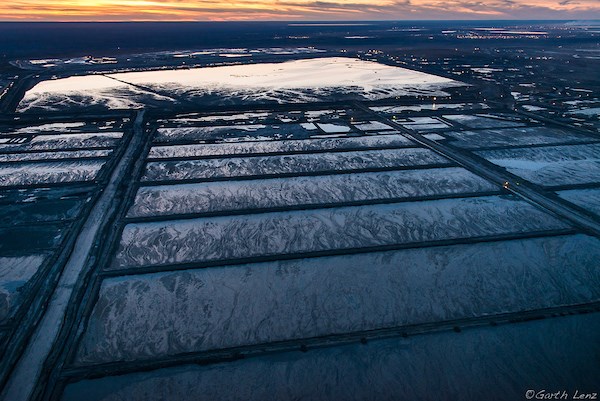LAKELAND - Alberta Environment and the Alberta Energy Regulator will both be evaluating five recommendations by the Oil Sands Mine Water Steering Committee to speed up the reclamation of tailings ponds.
Tailings ponds store water used in the oil extraction process, which includes a mix of water, sediments, and residual bitumen. Tailings ponds contain more than 1.4 billion cubic metres of oil sands mine water.
“The accumulation of large volumes of water is not sustainable, it creates environmental and financial liabilities and prevents water from being returned to the hydrological cycle,” said Fort McMurray – Wood Buffalo MLA Tany Yao in a letter accompanying the recommendations.
The recommendations include segregation of water streams for use or release, meaning to reduce the amount of “non-process affected” water ending up in tailings ponds in the first place. This includes melted snow and rainwater, surface runoff, muskeg dewatering, and non-saline groundwater depressurization which currently get “mixed with process affected water thereby increasing the volumes of water to be stored on site.”
Another recommendation is sharing oil sands mine water between oil sands operations, meaning to reduce the amount of water withdrawn from the Athabasca watershed by reusing and recycling water between mine sites and thermal in-situ operations.
According to the report, “Oil sands mining operations currently use about 220 million m3 of freshwater on an annual basis, about 26 per cent of their annual allocation. About 60 per cent of that comes from the Athabasca River, with the remainder from shallow groundwater and surface run-off.”
Sharing of oil sands mine water across watersheds, meaning focusing on keeping water within the watershed, is also recommended, along with deep well disposal of oil sands mine water.
Deep well disposal involves injecting the water deep underground beneath layers of impermeable rock. According to the report, “This approach should prioritize highly concentrated streams that cannot be economically treated and, if necessary, serve as a solution for OSMW requiring immediate management.”
Establishing standardized measurement methods for naphthenic acids is also noted in the report. Naphthenic acids are toxic organic compounds found in oil sands mine water, but also naturally occurring in the Lower Athabasca Region.
“There is currently no guidance on NAs in other jurisdictions that could be adopted for regulatory and other purposes. There is a lack of standardized methods across commercial laboratories for measuring NAs specifically, resulting in challenges with providing accurate measurements of NAs in OSMW and in the environment,” reads the report.
The recommendation also calls for the government to develop a high-resolution mass-spectrometry standardized method that could be used by commercial laboratories.
“Commitment to continuous improvement and consistency in data collection will enhance the relevance and reliability of these methods in the dynamic landscape of scientific and technological advancements,” reads the report.
“These effective and evidence-based recommendations help provide a roadmap to accelerate action to address tailings ponds and oil sands mine water. This will help Alberta better manage and reduce mine water while still delivering the most responsible energy in the world,” said Yao.
“We need to start finding a path to more effectively manage oil sands mine water and tailing ponds. Doing nothing while mine water continues accumulating is not a sustainable approach. I want to thank the committee for their thoughtful work. We will immediately start to carefully evaluate these recommendations and determine how they can safely be put into action,” said Rebecca Schulz, the Minister of Environment and Protected Areas.



